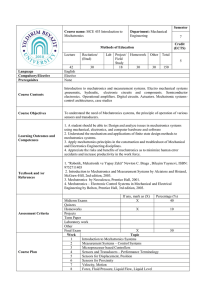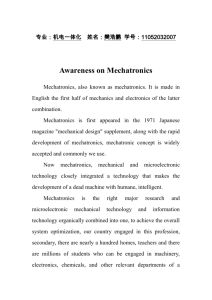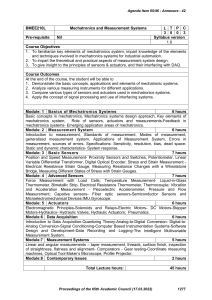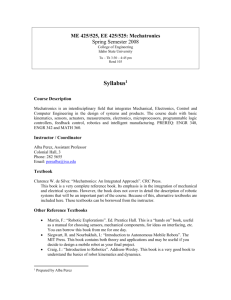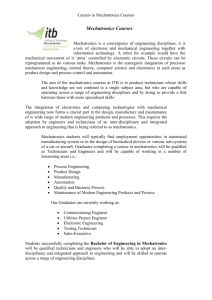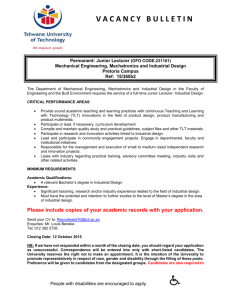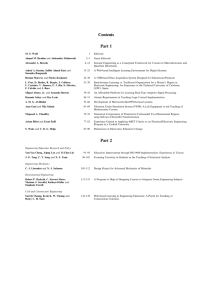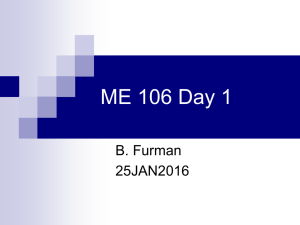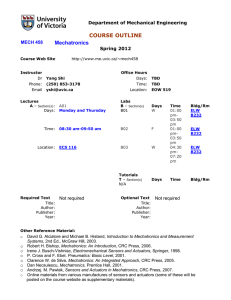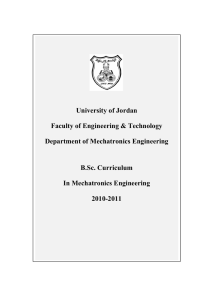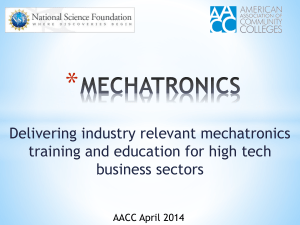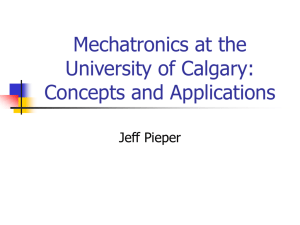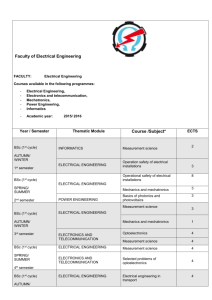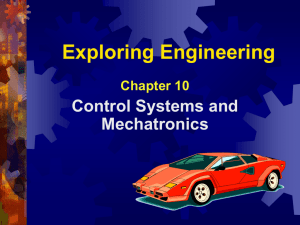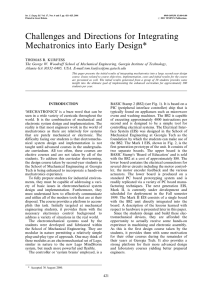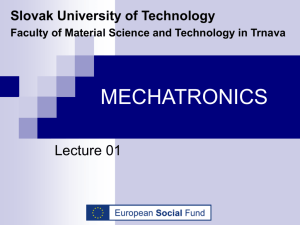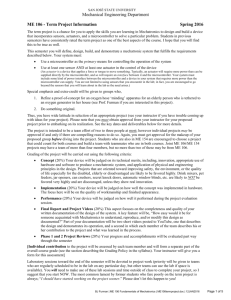ISE309: Mechatronics for Products
advertisement
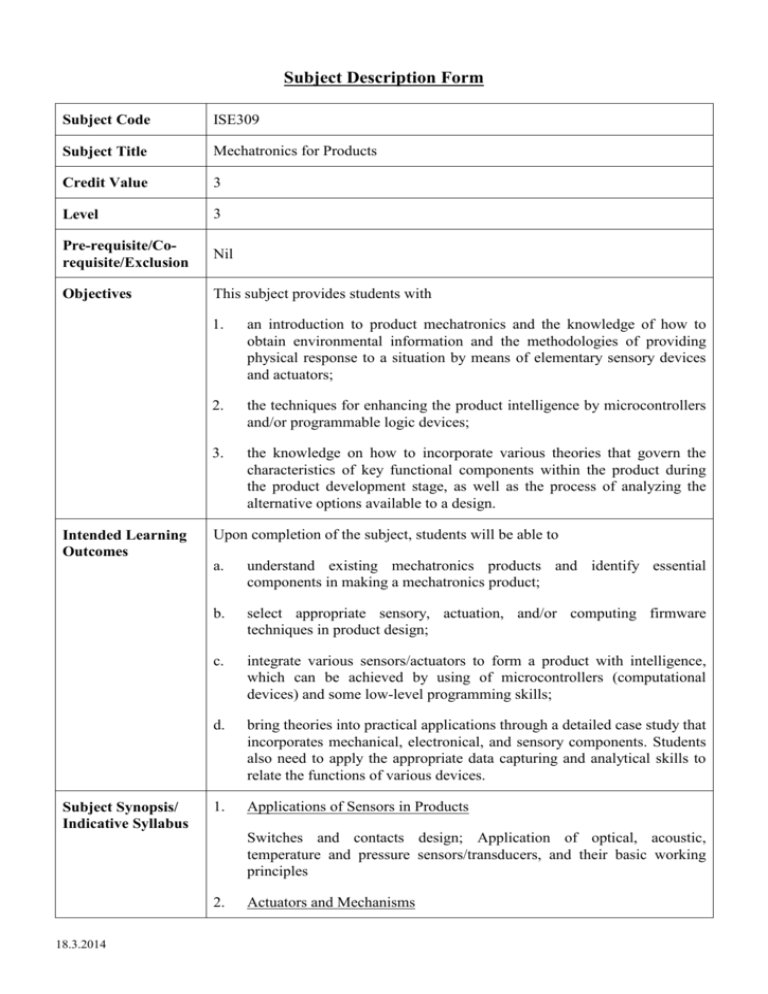
Subject Description Form Subject Code ISE309 Subject Title Mechatronics for Products Credit Value 3 Level 3 Pre-requisite/Corequisite/Exclusion Nil Objectives This subject provides students with Intended Learning Outcomes Subject Synopsis/ Indicative Syllabus 1. an introduction to product mechatronics and the knowledge of how to obtain environmental information and the methodologies of providing physical response to a situation by means of elementary sensory devices and actuators; 2. the techniques for enhancing the product intelligence by microcontrollers and/or programmable logic devices; 3. the knowledge on how to incorporate various theories that govern the characteristics of key functional components within the product during the product development stage, as well as the process of analyzing the alternative options available to a design. Upon completion of the subject, students will be able to a. understand existing mechatronics products and identify essential components in making a mechatronics product; b. select appropriate sensory, actuation, and/or computing firmware techniques in product design; c. integrate various sensors/actuators to form a product with intelligence, which can be achieved by using of microcontrollers (computational devices) and some low-level programming skills; d. bring theories into practical applications through a detailed case study that incorporates mechanical, electronical, and sensory components. Students also need to apply the appropriate data capturing and analytical skills to relate the functions of various devices. 1. Applications of Sensors in Products Switches and contacts design; Application of optical, acoustic, temperature and pressure sensors/transducers, and their basic working principles 2. 18.3.2014 Actuators and Mechanisms Mini-motor characteristics, selections, and applications; mechanical actuators design and implementation 3. Electro- Controllers Product intelligence, basic machine code instructions, and Boolean algebras; Micro-controller architecture, interface, and programming techniques 4. Mechatronics Products Integration of sensors, controllers, actuators, and mechanisms to formulate a mechatronics product 5. Case Study Development of an electronic bathroom scale, including beam theories, strain gauges, bridge circuit, and basic data capture techniques Teaching/Learning Methodology This subject involves a combination of lectures, tutorials, laboratory classes, and case studies. These four components are carried out to provide the necessary fundamental knowledge to students. Case studies are employed to integrate the different components of the topic, as well as to demonstrate how various techniques/theories are related, and how they apply in real product design. Assessment Methods in Alignment with Intended Learning Outcomes Specific assessment methods/tasks % weighting Intended subject learning outcomes to be assessed a b 1. Laboratory 35% 2. Tutorial / Mini-project 25% 3. Test 40% Total 100% c d Intended outcomes (1) and (2) are assessed via tutorials and tests, a means of students to express their knowledge in written form. Outcomes (3) and (4) are demonstrated by both practical and written work. Student Study Effort Expected 18.3.2014 Class contact: Lecture 2 hours/week for 8 weeks 16 Hrs. Tutorial/Case Study 1 hour/week for 8 weeks 8 Hrs. Laboratory 3 hours/week for 5 weeks 15 Hrs. Other student study effort: Assignment (laboratory, tutorial, mini project) 30 Hrs. Self-study/Preparation Work 50 Hrs. Total student study effort Reading List and References 119 Hrs. 1. David G. Alciatore, Michael B. Histand 2012, Introduction to Mechatronics and Measurement Systems (4th Edn), New York: McGrawHill 2. A. Smaili, F. Mrad 2008, Applied Mechatronics, New York: Oxford University Press 3. Appuu Kuttan K.K 2007, Introduction to Mechatronics, New Delhi; New York : Oxford University Press 4. Godfrey C. Onwubolu 2005, Mechatronics : Principles and Applications, Oxford [England] ; Burlington, Mass. : Elsevier Butterworth-Heinemann 18.3.2014
